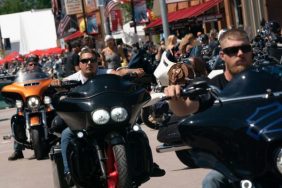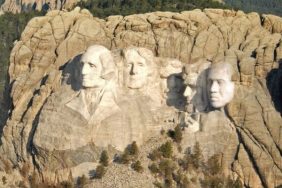Established in 1889, Prisoner of War Camp #344 (euphemistically known as Pine Ridge Reservation) is the site of the Wounded Knee Massacre (1890) and the Wounded Knee Incident (1973). Home to the Oglala Lakota, one of the seven tribes of the Great Sioux Nation, Pine Ridge is the eighth largest reservation in the United States. Yet despite its size, only 74K acres are suitable for agriculture. With a per capita income of about $6K, the unemployment rate is at a staggering 90% (versus 4.9% for the rest of the country). The life expectancy for men is 48, roughly the same as Afghanistan and Somalia, and the infant mortality rate is five times the national average.

The United States policies toward the Oglala Lakota have always treated the natives of this land as the enemy within. Twenty Congressional Medals of Honor for Valor were handed out after the Wounded Knee Massacre, in which more than 300 prisoners of war were slaughtered. Considered the end of the Indian wars, the United States government had only just begun its occupation and systemic destruction of the surviving generations.
In 2005, photojournalist Aaron Huey began documenting Pine Ridge as part of a story about poverty in America. As he writes in the afterword to his monograph, Mitakuye Oyasin (Radius Books), “In the beginning, it was all just statistics…. Over time it became clear to me that these statistics came from a deep historical wound. And then my photographs of Pine Ridge became a story about a prisoner of war camp, a story about genocide, a story about stolen lands…. I have stumbled into something sacred on Pine Ridge. It took my eyes a long time to see that, but my heart knew it right away.”

“Mitakuye Oyasin”, which translates into English as “All my Relations”, takes us deep inside the ceremonial warrior culture of Pine Ridge. As Andrew Ironshell reveals in the book’s introduction, “We say Mitakuye Oyasin at the beginning and end of our ceremonies. But we also say it in the morning and in the evening—and in those times of hardship and times of happiness, or in our own minds. Or you may walk with it in the way of your own life, that people know when they say those words, Mitakuye Oyasin, that they may see you in the vision of their mind.”

The book opens with the vision of Black Elk, in which he saw four ascents. As Rick Two Dogs writes, “And in the third vision he saw the people walking in darkness and everyone was following their own path and no one was following the right teachings and there was like a darkness over the land—like a cloud that covered the people…. I think that black cloud that Black Elk saw was the depression we’re living in now. And his belief was that it would be because of the returning to our own teachings, our own language, and our own culture—that we would come out of this depression.”
Mitakuye Oyasin reminds us that it is always darkest before the dawn, and that if we look closely, we can see this as the moment in which we are ready to be return. Huey’s photographs reveal the silver lining of that black cloud, and offer a path back to the beginning, from where the light comes.
Photos courtesy of Radius Books and Aaron Huey
Miss Rosen is a New York-based writer, curator, and brand strategist. There is nothing she adores so much as photography and books. A small part of her wishes she had a proper library, like in the game of Clue. Then she could blaze and write soliloquies to her in and out of print loves.








